Secure Hydrogen Production Analysis and Prediction Based on Blockchain Service Framework for Intelligent Power Management System
Abstract
:1. Introduction
- In this paper, blockchain is applied for secure hydrogen data analysis, ensuring data integrity, transparency, and immutability, to enhance the security and trustworthiness of the hydrogen data analysis process.
- The paper proposes integrating intelligent power management systems with blockchain technology. It highlights the benefits of combining these two domains to optimize hydrogen generation, storage, and consumption, leading to more efficient and sustainable power management practices.
- The paper presents various data analysis techniques specifically tailored for hydrogen data analysis. These include correlation analysis, box plot analysis, feature ranking, and predictive analytics, enabling valuable insights and informed decision making.
- The paper addresses the security and privacy challenges associated with hydrogen data analysis. It proposes using encryption, access control mechanisms, and secure data handling protocols to safeguard sensitive information and ensure secure data management throughout the analysis process.
- The paper discusses the practical implementation aspects of the proposed system. It includes details on the architecture, algorithms, protocols, and technologies employed to realize the secure hydrogen data analysis system based on blockchain and intelligent power management.
2. Literature Review
3. Methodology
3.1. Proposed Scenario of Blockchain Based Secure Hydrogen Data Analysis
3.2. Proposed Layered Architecture Design
- Layer 1: Hydrogen Physical Layer. The bottom-most layer represents the system’s physical components, including renewable energy sources, power converters, and energy storage systems. It incorporates an electrolyzer for green hydrogen production through electrolysis. The produced hydrogen is compressed, stored in a hydrogen tank, and distributed to various destinations within the green hydrogen asset network, such as hydrogen housing, hydrogen turbines, and hydrogen pumps.
- Layer 2: Hydrogen Blockchain Virtual Layer. The virtual representation of each physical asset’s data resides in this layer. It includes the virtual assets of the blockchain network, such as wind turbine data, solar panel data, green ESS (energy storage system) data, hydrogen electrolyzer data, and hydrogen delivery data.
- Layer 3: Hydrogen Blockchain Service Framework Layer. Sitting atop the Hydrogen Blockchain Virtual Layer is the Hydrogen Blockchain Service Framework Layer. This layer is further divided into two sub-layers: the Hydrogen Blockchain Services sub-layer and the REST API Server sub-layer. The Hydrogen Blockchain Services sub-layer comprises components such as a consensus manager, smart contracts, identity management, access control, network configuration, real-time storage, and security. The REST API Server sub-layer includes HTTP, API, and REST API methods for communication, including POST, GET, PUT, and DELETE. This layer facilitates the connection between the above layers and the hydrogen blockchain services.
- Layer 4: Hydrogen Application Layer. In this layer, two sub-layers are introduced. The first sub-layer is the Power Management Application Layer, which includes functionalities such as hydrogen fuel consumption prediction, residential level prediction, commercial level prediction, industrial level prediction, load management monitoring, energy storage reporting and visualization, and power distribution monitoring. The second sub-layer focuses on hydrogen data analytics, including the use of a weighted attention mechanism for hydrogen data predictive analytics and modules for box plot analysis, correlation analysis, and feature ranking analysis.
- Layer 5: Hydrogen User Layer. The topmost layer represents the hydrogen user layer, which includes the operational in charge, maintenance in charge, data analyst, and supply management. These users interact with the system by generating transactions and retrieving responses from the hydrogen blockchain service framework using the REST API server.
3.3. Hydrogen Power Management Architectural Based on Data Analysis Using Blockchain Framework Overview
3.4. Blockchain Framework for Secure HDA
3.5. Interection Model of the Proposed Blockchain-Based HMA of Green Hydrogen Production and Consumption
3.6. TPM of the Proposed Blockchain-Based HMA of GHP and Consumption
3.7. Hydrogen Consumption Data Prediction
4. Experiment and Implementation
- Solar Current: This line indicates the current generated by the solar panels, which convert sunlight into electricity.
- Energy Storage System Current: This line represents the current flowing to or from the energy storage system (e.g., batteries), which stores excess electricity generated by the solar panels or other renewable energy sources.
- Electrolyzer Current: This line shows the current used by the electrolyzer, which is a critical component responsible for producing hydrogen through electrolysis.
5. Performance of Secure Data-Driven History Management Analysis
6. Discussion, Comparison, and Limitations
- The possibility of data tampering, in which nefarious individuals try to alter the information gathered about hydrogen production, use, and storage. This could cause erroneous forecasts and interfere with the system’s functionality [48].
- The manufacturing and storage systems for hydrogen are becoming more and more vulnerable to hackers. These kinds of assaults can be used to harm equipment, interfere with operations, or even steal data. Because blockchain creates a dispersed, decentralized network that is more resilient to attacks, it can improve cybersecurity. Additionally, it can be used to safeguard login information and prevent unauthorized changes [49].
- Security and safety risks might arise from supply chain weaknesses, such as tampering with the transportation and storage of hydrogen. A supply chain-wide immutable ledger can be produced using blockchain technology. It lowers the possibility of tampering by guaranteeing the traceability of hydrogen generation, transmission, and storage [50].
- Sensitive information may be present in predictive maintenance systems. Unauthorized entry may result in data breaches and possibly harm essential equipment. Predictive maintenance data can be secured using blockchain technology by encrypting it and limiting access via smart contracts. Authorized personnel can access data while security and privacy are preserved [2].
- Systems for energy trading and billing can be subject to fraud and conflicts in hydrogen production. Blockchain-based smart contracts can automate energy trade and billing, guaranteeing tamper-proof and transparent transactions. Settlements become more open and safer [51].
- Penalties, both monetary and legal, may arise from breaking environmental and safety standards. Blockchain technology can securely store data on emissions, safety precautions, and other regulatory requirements, which can automate compliance reporting. Transparency and compliance are thus guaranteed [52].
7. Conclusions and Future Directions
Author Contributions
Funding
Data Availability Statement
Conflicts of Interest
References
- Ishaq, H.; Dincer, I.; Crawford, C. A review on hydrogen production and utilization: Challenges and opportunities. Int. J. Hydrogen Energy 2022, 47, 26238–26264. [Google Scholar] [CrossRef]
- Ahmad, T.; Zhang, D.; Huang, C.; Zhang, H.; Dai, N.; Song, Y.; Chen, H. Artificial intelligence in sustainable energy industry: Status Quo, challenges and opportunities. J. Clean. Prod. 2021, 289, 125834. [Google Scholar] [CrossRef]
- Raeesi, M.; Changizian, S.; Ahmadi, P.; Khoshnevisan, A. Performance analysis of a degraded PEM fuel cell stack for hydrogen passenger vehicles based on machine learning algorithms in real driving conditions. Energy Convers. Manag. 2021, 248, 114793. [Google Scholar] [CrossRef]
- Nasser, M.; Megahed, T.F.; Ookawara, S.; Hassan, H. Performance evaluation of PV panels/wind turbines hybrid system for green hydrogen generation and storage: Energy, exergy, economic, and enviroeconomic. Energy Convers. Manag. 2022, 267, 115870. [Google Scholar] [CrossRef]
- Okonkwo, P.C.; Barhoumi, E.M.; Mansir, I.B.; Emori, W.; Uzoma, P.C. Techno-economic analysis and optimization of solar and wind energy systems for hydrogen production: A case study. Energy Sources Part A Recover. Util. Environ. Eff. 2022, 44, 9119–9134. [Google Scholar] [CrossRef]
- Hurtubia, B.; Sauma, E. Economic and environmental analysis of hydrogen production when complementing renewable energy generation with grid electricity. Appl. Energy 2021, 304, 117739. [Google Scholar] [CrossRef]
- Rad, M.A.V.; Ghasempour, R.; Rahdan, P.; Mousavi, S.; Arastounia, M. Techno-economic analysis of a hybrid power system based on the cost-effective hydrogen production method for rural electrification, a case study in Iran. Energy 2020, 190, 116421. [Google Scholar] [CrossRef]
- D’Amore Domenech, R.; Santiago, O.; Leo, T.J. Multicriteria analysis of seawater electrolysis technologies for green hydrogen production at sea. Renew. Sustain. Energy Rev. 2020, 133, 110166. [Google Scholar] [CrossRef]
- Kumar, K.P.V.; Lakshmi, B.; Kumar, S.S.; Muralidhar, V.; Sai, N.R.; Nagamalleswara, V. Blockchain Technology: A Comprehensive Review and Future Directions. In Proceedings of the 2023 Second International Conference on Augmented Intelligence and Sustainable Systems (ICAISS), Trichy, India, 23–25 August 2023; pp. 1362–1368. [Google Scholar]
- Ahl, A.; Yarime, M.; Goto, M.; Chopra, S.S.; Kumar, N.M.; Tanaka, K.; Sagawa, D. Exploring blockchain for the energy transition: Opportunities and challenges based on a case study in Japan. Renew. Sustain. Energy Rev. 2020, 117, 109488. [Google Scholar] [CrossRef]
- Mould, K.; Silva, F.; Knott, S.F.; O’Regan, B. A comparative analysis of biogas and hydrogen, and the impact of the certificates and blockchain new paradigms. Int. J. Hydrogen Energy 2022, 47, 39303–39318. [Google Scholar] [CrossRef]
- Liu, H.; Zhang, Y.; Zheng, S.; Li, Y. Electric vehicle power trading mechanism based on blockchain and smart contract in V2G network. IEEE Access 2019, 7, 160546–160558. [Google Scholar] [CrossRef]
- Qayyum, F.; Jamil, H.; Jamil, F.; Kim, D. Predictive Optimization Based Energy Cost Minimization and Energy Sharing Mechanism for Peer-to-Peer Nanogrid Network. IEEE Access 2022, 10, 23593–23604. [Google Scholar] [CrossRef]
- Teng, F.; Zhang, Q.; Wang, G.; Liu, J.; Li, H. A comprehensive review of energy blockchain: Application scenarios and development trends. Int. J. Energy Res. 2021, 45, 17515–17531. [Google Scholar] [CrossRef]
- yuvraj_pitWP. Toshiba, Tohoku Electric Power and Iwatani Start Development of Large Hydrogen Energy System. Available online: https://www.powerinfotoday.com/Hydroelectric/toshiba-tohoku-electric-power-and-iwatani-start-development-of-large-hydrogen-energy-system/ (accessed on 24 July 2023).
- Hydrogen Utilization Technology|Company Information |Shimizu Corporation. Available online: https://www.shimz.co.jp/en/company/about/sit/topics/topics02/ (accessed on 24 July 2023).
- Energy Management Technology|Low Carbon Technologies | ENEOS Corporation. Available online: https://www.eneos.co.jp/english/company/rd/intro/low_carbon/ (accessed on 24 July 2023).
- Grantham, D. Hydrogen Asset Integration Will Spur Accelerated Decarbonization. Available online: https://www.pcienergysolutions.com/2022/01/17/hydrogen-asset-integration-will-spur-accelerated-decarbonization/ (accessed on 24 July 2023).
- Khan, M.H.A.; Heywood, P.; Kuswara, A.; Daiyan, R.; MacGill, I.; Amal, R. An integrated framework of open-source tools for designing and evaluating green hydrogen production opportunities. Commun. Earth Environ. 2022, 3, 309. [Google Scholar] [CrossRef]
- European HYFLEXPOWER. Project to Demo First Integrated Power-to-X-to-Power Hydrogen Gas Turbine. Available online: https://www.hyflexpower.eu/ (accessed on 24 July 2023).
- Jamil, H.; Qayyum, F.; Iqbal, N.; Kim, D.-H. Enhanced Harmonics Reactive Power Control Strategy Based on Multilevel Inverter Using ML-FFNN for Dynamic Power Load Management in Microgrid. Sensors 2022, 22, 6402. [Google Scholar] [CrossRef] [PubMed]
- Bhandari, R. Green hydrogen production potential in West Africa–Case of Niger. Renew. Energy 2022, 196, 800–811. [Google Scholar] [CrossRef]
- Nwaiwu, F. Digitalisation and sustainable energy transitions in Africa: Assessing the impact of policy and regulatory environments on the energy sector in Nigeria and South Africa. Energy Sustain. Soc. 2021, 11, 48. [Google Scholar] [CrossRef]
- Bondarenko, V.; Ilyinskaya, D.; Kazakova, A.; Kozlovtsev, P.; Lavrov, N. Introduction to Digital Hydrogen Energy. Chem. Pet. Eng. 2022, 58, 42–46. [Google Scholar] [CrossRef]
- Juszczyk, O.; Shahzad, K. Blockchain technology for renewable energy: Principles, applications and prospects. Energies 2022, 15, 4603. [Google Scholar] [CrossRef]
- Kumari, A.; Gupta, R.; Tanwar, S. Amalgamation of blockchain and IoT for smart cities underlying 6G communication: A comprehensive review. Comput. Commun. 2021, 172, 102–118. [Google Scholar] [CrossRef]
- Syed, D.; Zainab, A.; Ghrayeb, A.; Refaat, S.S.; Abu-Rub, H.; Bouhali, O. Smart grid big data analytics: Survey of technologies, techniques, and applications. IEEE Access 2020, 9, 59564–59585. [Google Scholar] [CrossRef]
- Stringer, A.D.; Thompson, C.C.; Barriga, C.I. Analysis of historical transformer failure and maintenance data: Effects of era, age, and maintenance on component failure rates. IEEE Trans. Ind. Appl. 2019, 55, 5643–5651. [Google Scholar] [CrossRef]
- Liu, H.; Chen, C. Data processing strategies in wind energy forecasting models and applications: A comprehensive review. Appl. Energy 2019, 249, 392–408. [Google Scholar] [CrossRef]
- Ghorbanian, M.; Dolatabadi, S.H.; Siano, P. Big data issues in smart grids: A survey. IEEE Syst. J. 2019, 13, 4158–4168. [Google Scholar] [CrossRef]
- El Akrami, N.; Hanine, M.; Flores, E.S.; Aray, D.G.; Ashraf, I. Unleashing the Potential of Blockchain and Machine Learning: Insights and Emerging Trends from Bibliometric Analysis. IEEE Access 2023, 11, 78879–78903. [Google Scholar] [CrossRef]
- Tandon, A.; Dhir, A.; Islam, A.N.; Mäntymäki, M. Blockchain in healthcare: A systematic literature review, synthesizing framework and future research agenda. Comput. Ind. 2020, 122, 103290. [Google Scholar] [CrossRef]
- Jamil, F.; Ahmad, S.; Iqbal, N.; Kim, D.H. Towards a remote monitoring of patient vital signs based on IoT-based blockchain integrity management platforms in smart hospitals. Sensors 2020, 20, 2195. [Google Scholar] [CrossRef]
- Jamil, F.; Qayyum, F.; Alhelaly, S.; Javed, F.; Muthanna, A. Intelligent Microservice Based on Blockchain for Healthcare Applications. Comput. Mater. Contin. 2021, 69, 2513–2530. [Google Scholar] [CrossRef]
- Mukherjee, S.; Baral, M.M.; Lavanya, B.L.; Nagariya, R.; Singh Patel, B.; Chittipaka, V. Intentions to adopt the blockchain: Investigation of the retail supply chain. Manag. Decis. 2023, 61, 1320–1351. [Google Scholar] [CrossRef]
- Jamil, F.; Kim, D. Payment mechanism for electronic charging using blockchain in smart vehicle. Korea 2019, 30, 31. [Google Scholar]
- Singh, A.K.; Kumar, V.G.R.P.; Hu, J.; Irfan, M. Investigation of barriers and mitigation strategies to blockchain technology implementation in construction industry: An interpretive structural modeling approach. Environ. Sci. Pollut. Res. 2023, 30, 89889–89909. [Google Scholar] [CrossRef] [PubMed]
- Ahmed, M.R.; Meenakshi, K.; Obaidat, M.S.; Amin, R.; Vijayakumar, P. Blockchain based architecture and solution for secure digital payment system. In Proceedings of the ICC 2021-IEEE International Conference on Communications, Montreal, QC, Canada, 14–23 June 2021; pp. 1–6. [Google Scholar]
- Al-Ameri, M.A.A.; Mahmood, B.; Ciylan, B.; Amged, A. Unsupervised Forgery Detection of Documents: A Network-Inspired Approach. Electronics 2023, 12, 1682. [Google Scholar] [CrossRef]
- Sohail, H.; Hassan, M.u.; Elmagzoub, M.; Rajab, A.; Rajab, K.; Ahmed, A.; Shaikh, A.; Ali, A.; Jamil, H. BBSF: Blockchain-Based Secure Weather Forecasting Information through Routing Protocol in Vanet. Sensors 2023, 23, 5259. [Google Scholar] [CrossRef] [PubMed]
- Trivedi, S. Blockchain Framework for Insurance industry. Int. J. Innov. Technol. Manag. 2023, 20, 2350034. [Google Scholar] [CrossRef]
- Qayyum, F.; Jamil, H.; Iqbal, N.; Kim, D. IoT Orchestration-Based Optimal Energy Cost Decision Mechanism with ESS Power Optimization for Peer-to-Peer Energy Trading in Nanogrid. Smartcities 2023, 6, 2196–2220. [Google Scholar] [CrossRef]
- Mistry, I.; Tanwar, S.; Tyagi, S.; Kumar, N. Blockchain for 5G-enabled IoT for industrial automation: A systematic review, solutions, and challenges. Mech. Syst. Signal Process. 2020, 135, 106382. [Google Scholar] [CrossRef]
- Ali, A.; Iqbal, M.M.; Jamil, H.; Qayyum, F.; Jabbar, S.; Cheikhrouhou, O.; Baz, M.; Jamil, F. An efficient dynamic-decision based task scheduler for task offloading optimization and energy management in mobile cloud computing. Sensors 2021, 21, 4527. [Google Scholar] [CrossRef]
- Iqbal, N.; Jamil, F.; Ahmad, S.; Kim, D. A novel blockchain-based integrity and reliable veterinary clinic information management system using predictive analytics for provisioning of quality health services. IEEE Access 2021, 9, 8069–8098. [Google Scholar] [CrossRef]
- Pranita, D.; Sarjana, S.; Musthofa, B.M.; Kusumastuti, H.; Rasul, M.S. Blockchain Technology to Enhance Integrated Blue Economy: A Case Study in Strengthening Sustainable Tourism on Smart Islands. Sustainability 2023, 15, 5342. [Google Scholar] [CrossRef]
- Bhattacharyya, S.; Athithan, S.; Pal, S.; Sarkar, B.; Akila, D.; Chowdhury, S.; Chandran, K.; Gurusamy, S. An IoT-Enabled Intelligent and Secure Manufacturing Model Using Blockchain in Hybrid Cloud Communication System. Secur. Commun. Netw. 2023, 2023, 7556728. [Google Scholar] [CrossRef]
- Chang, Y.; Zhang, C.; Shi, J.; Li, J.; Zhang, S.; Chen, G. Dynamic Bayesian network based approach for risk analysis of hydrogen generation unit leakage. Int. J. Hydrogen Energy 2019, 44, 26665–26678. [Google Scholar] [CrossRef]
- Woo, T.H. Cybersecurity analysis using the blockchain algorithm in nuclear power plants to enhance safe operations. Energy Sources Part A Recover. Util. Environ. Eff. 2020, 1–11. [Google Scholar] [CrossRef]
- Jamil, F.; Iqbal, N.; Ahmad, S.; Kim, D. Peer-to-peer energy trading mechanism based on blockchain and machine learning for sustainable electrical power supply in smart grid. IEEE Access 2021, 9, 39193–39217. [Google Scholar] [CrossRef]
- Su, X.; Hu, Y.; Liu, W.; Jiang, Z.; Qiu, C.; Xiong, J.; Sun, J. A blockchain-based smart contract model for secured energy trading management in smart microgrids. Secur. Priv. 2023, e341. [Google Scholar] [CrossRef]
- Schmid, J. Is it Green? Designing a Blockchain-Based Certification System for Green Hydrogen. Master’s Thesis, Delft University of Technology, Delft, The Netherland, 2023. [Google Scholar]


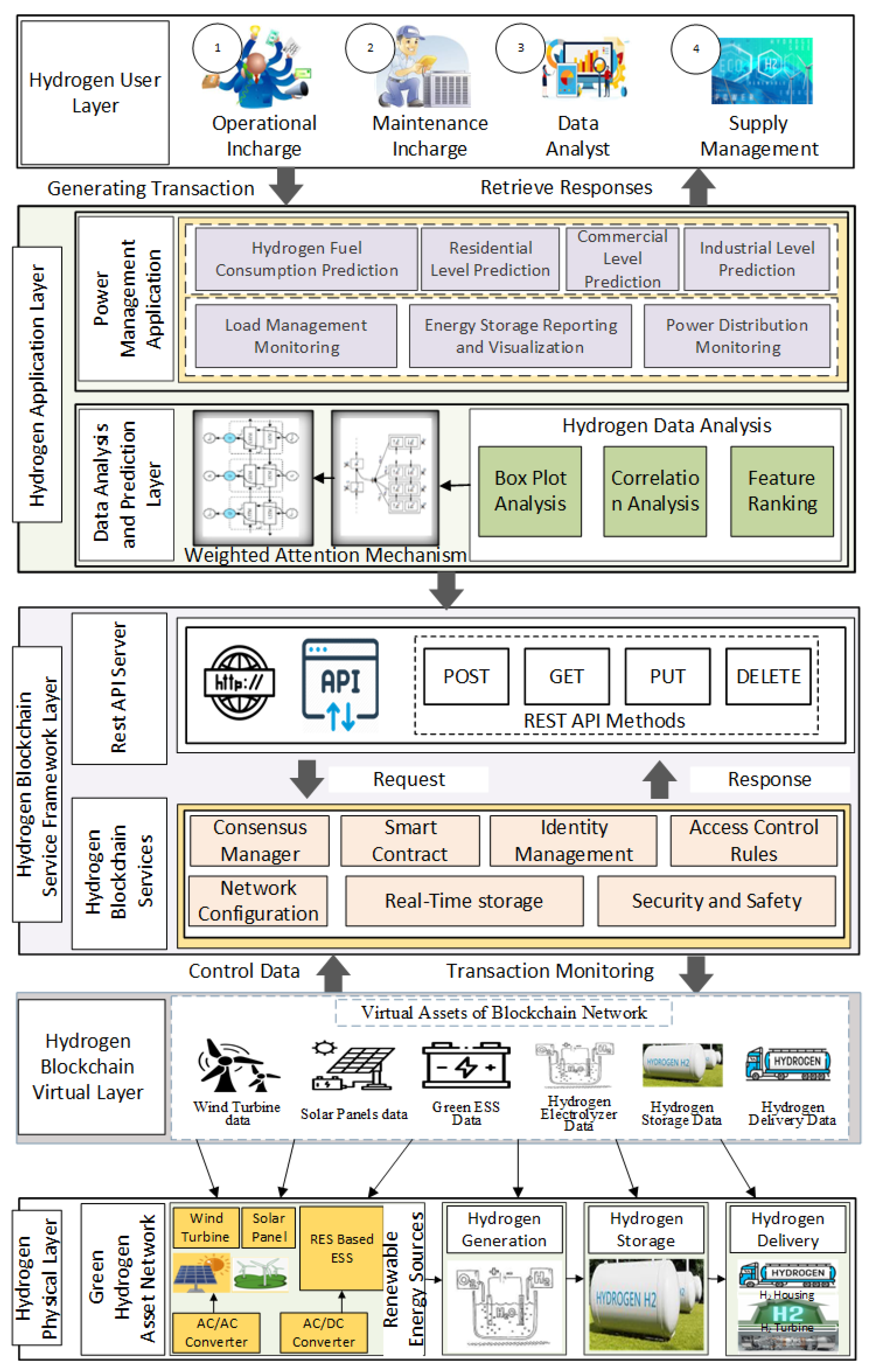
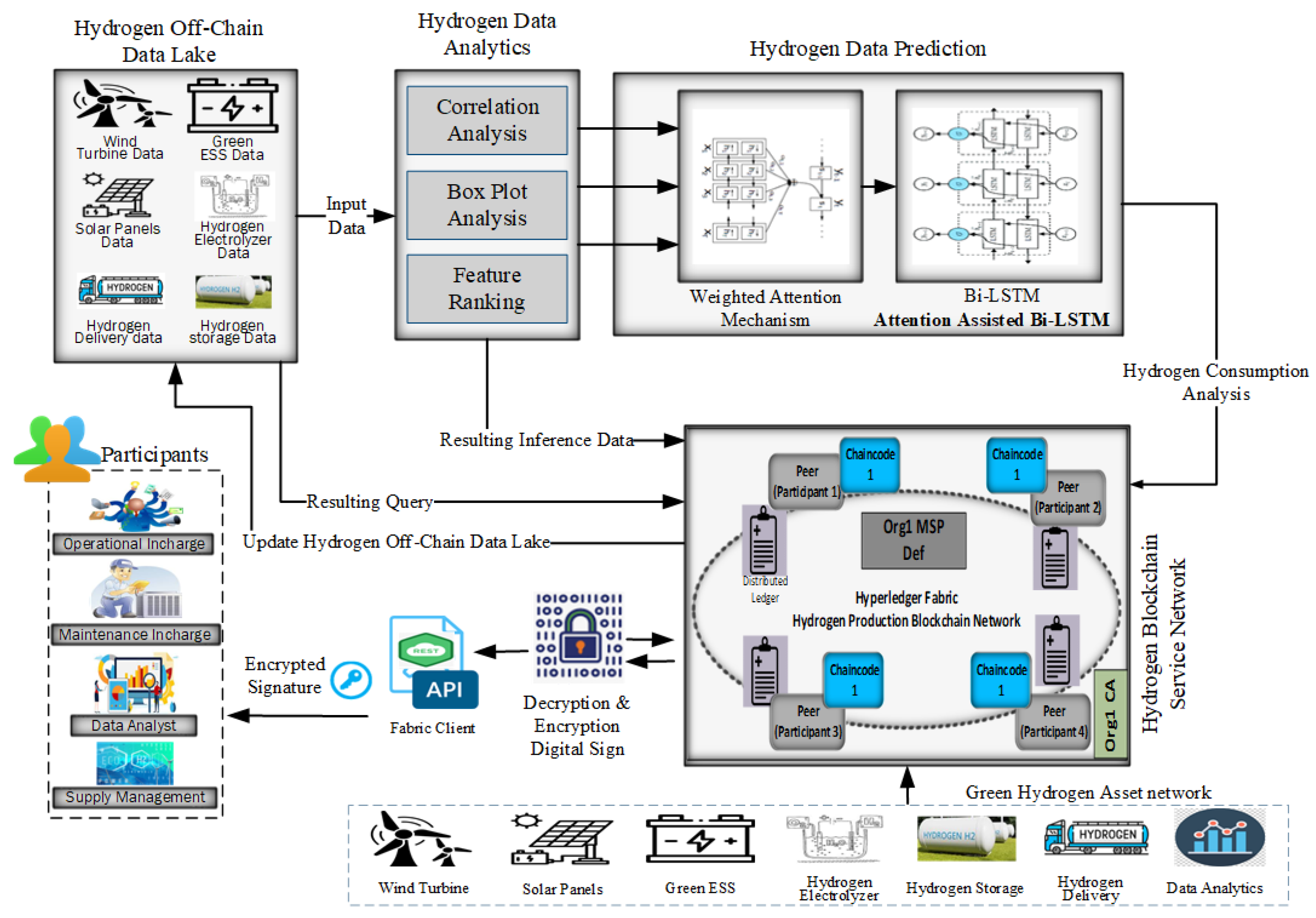
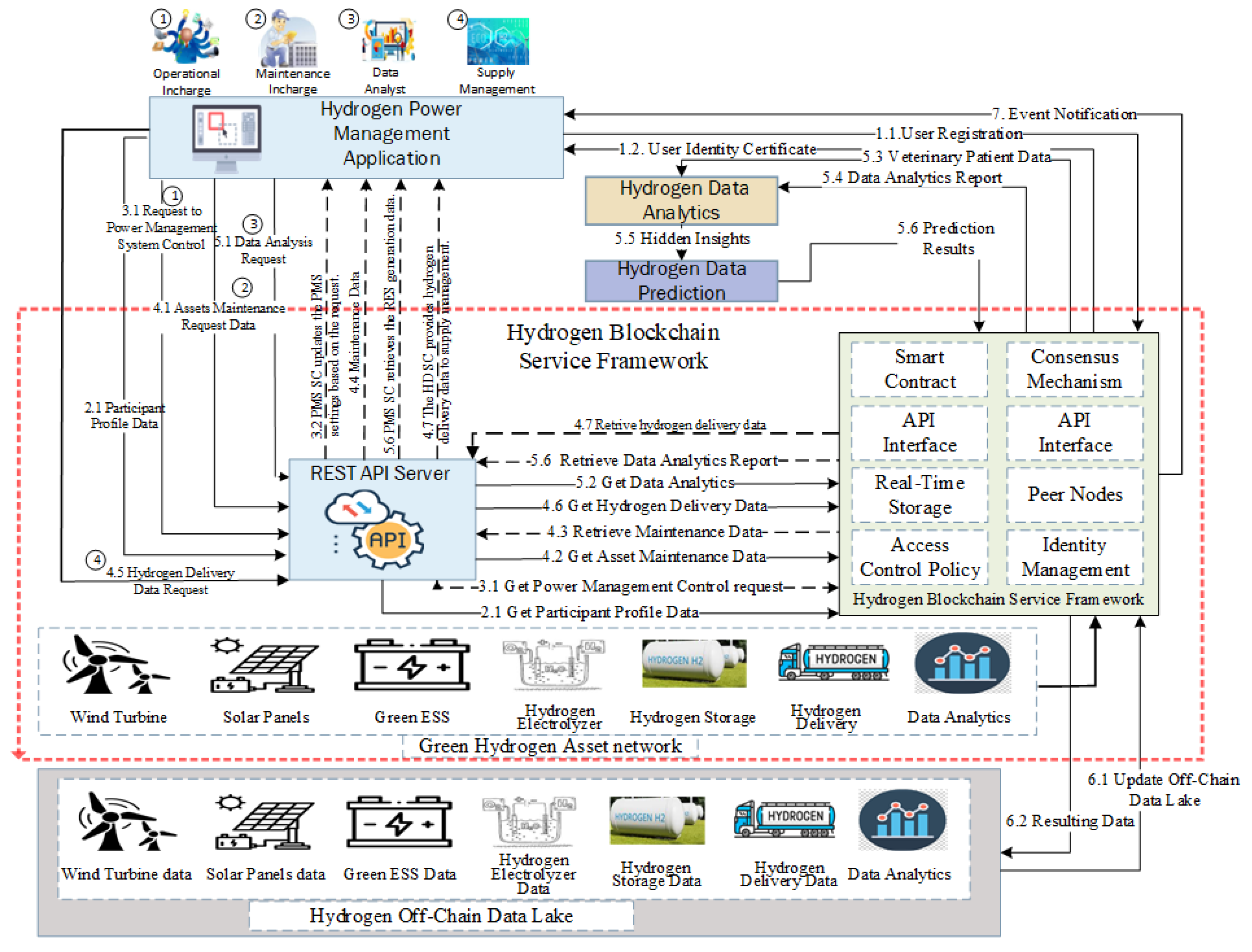

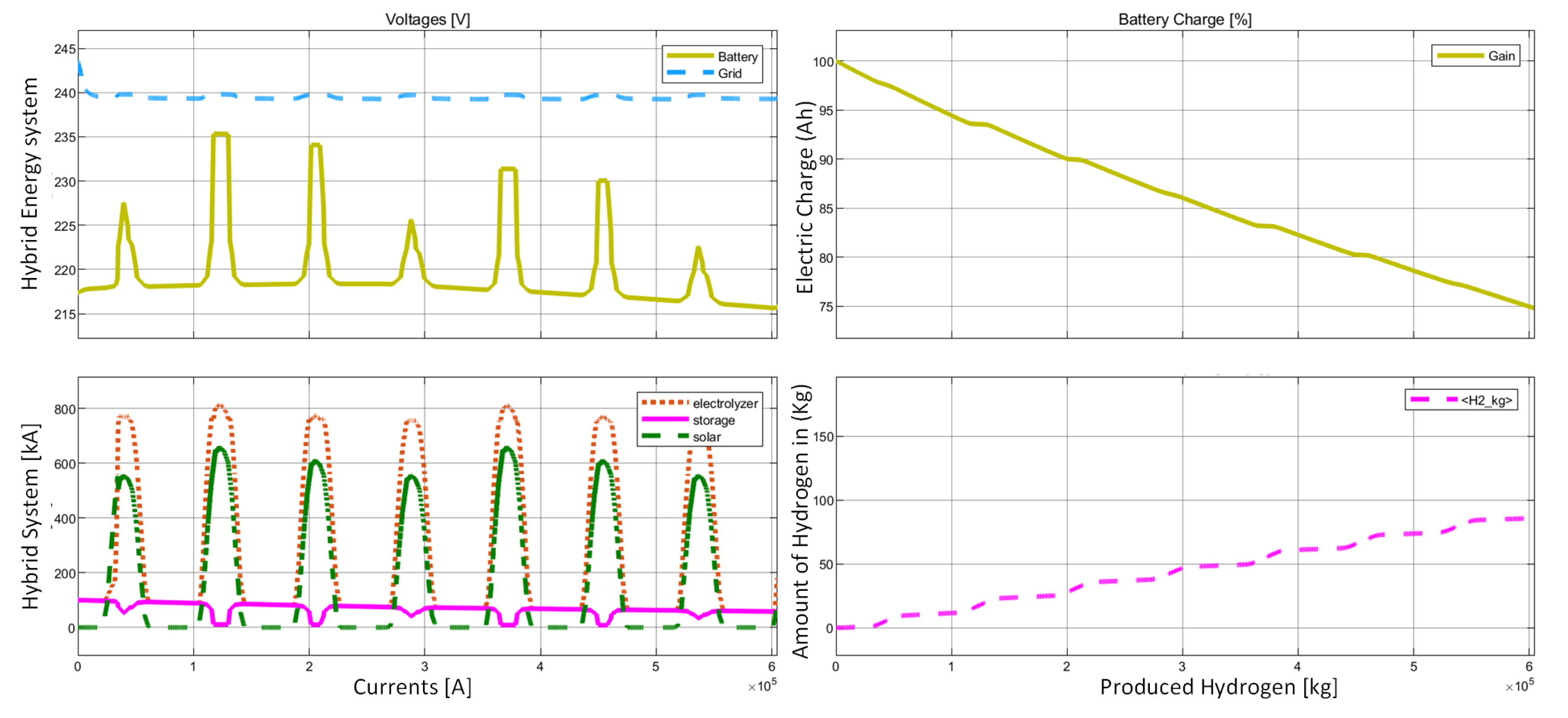
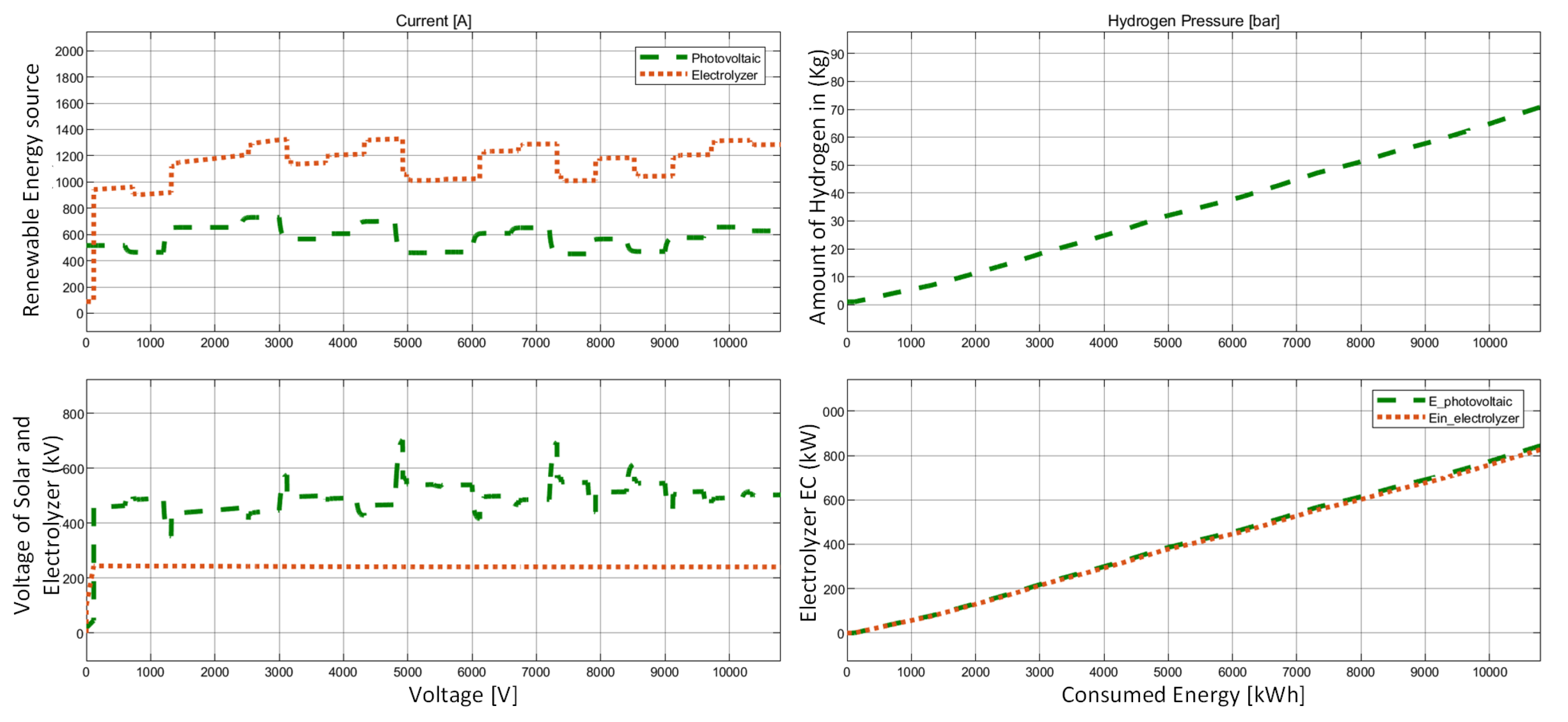
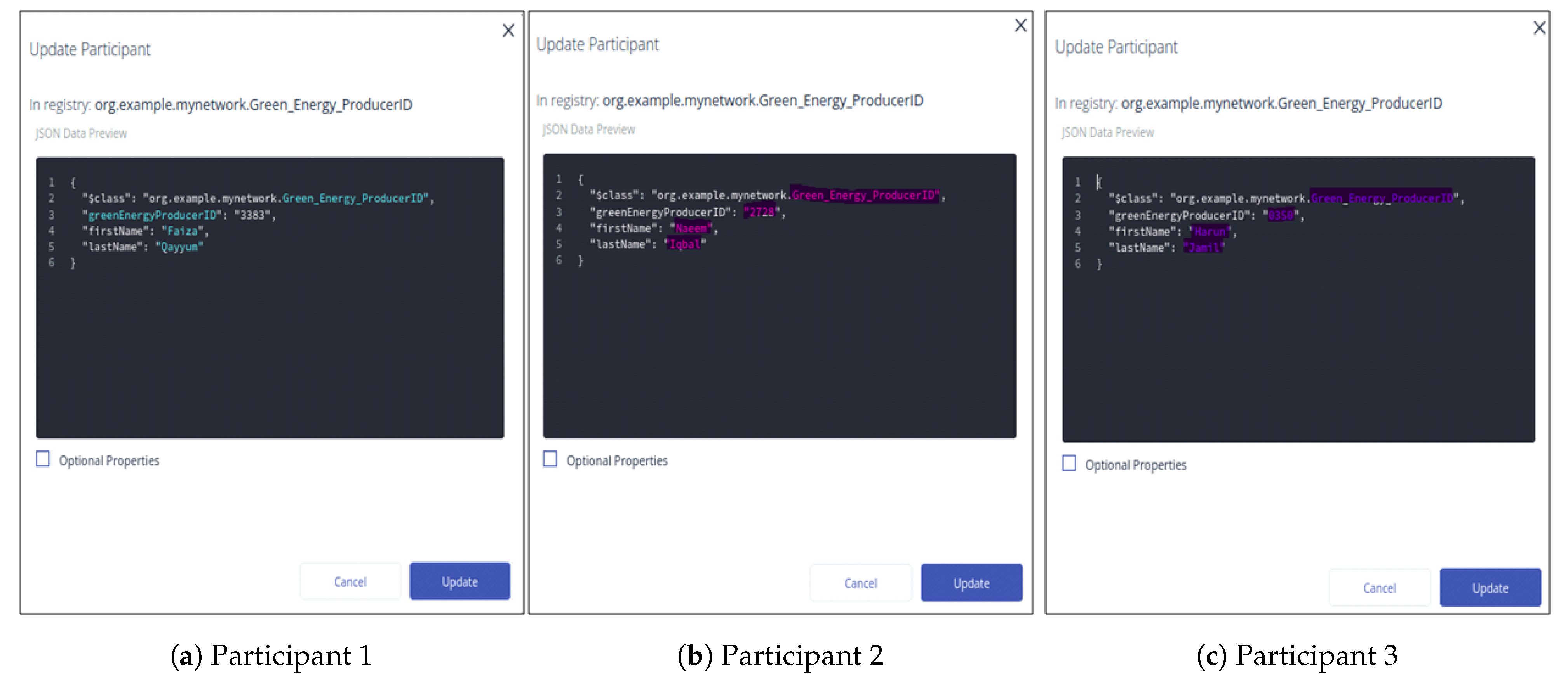
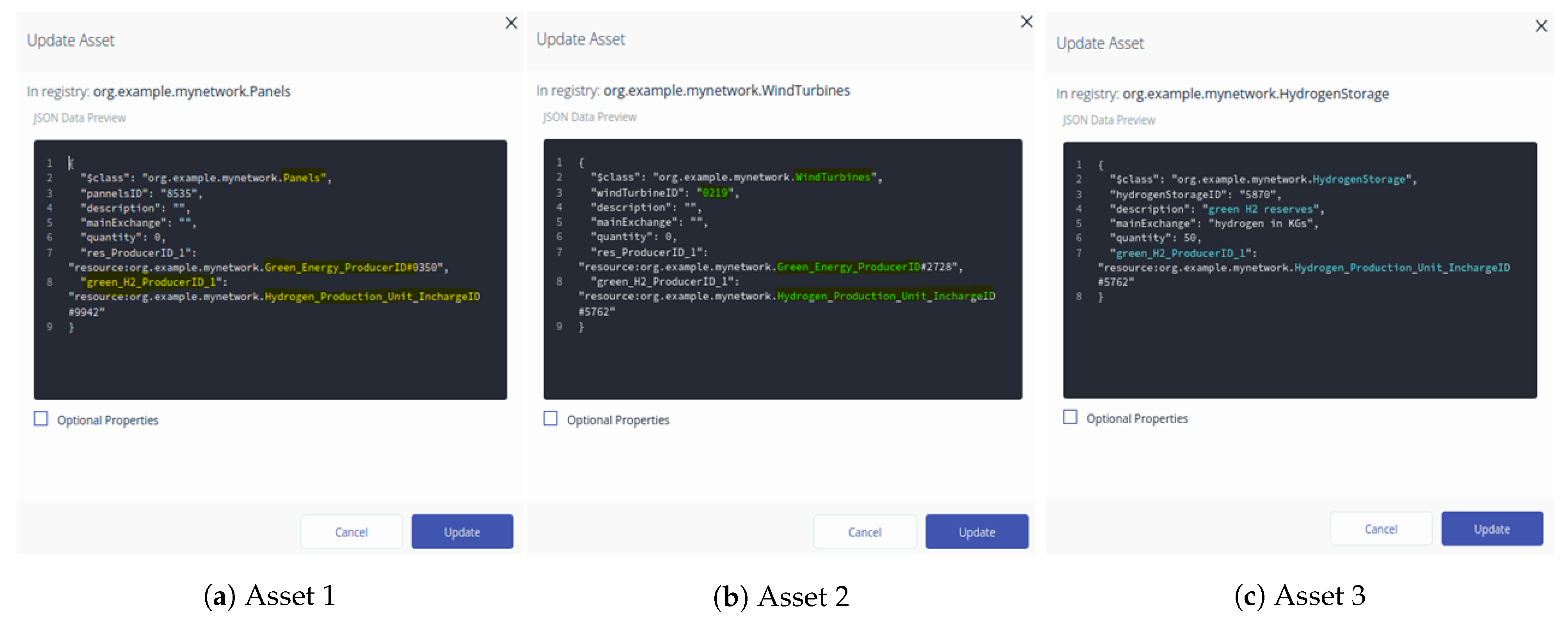

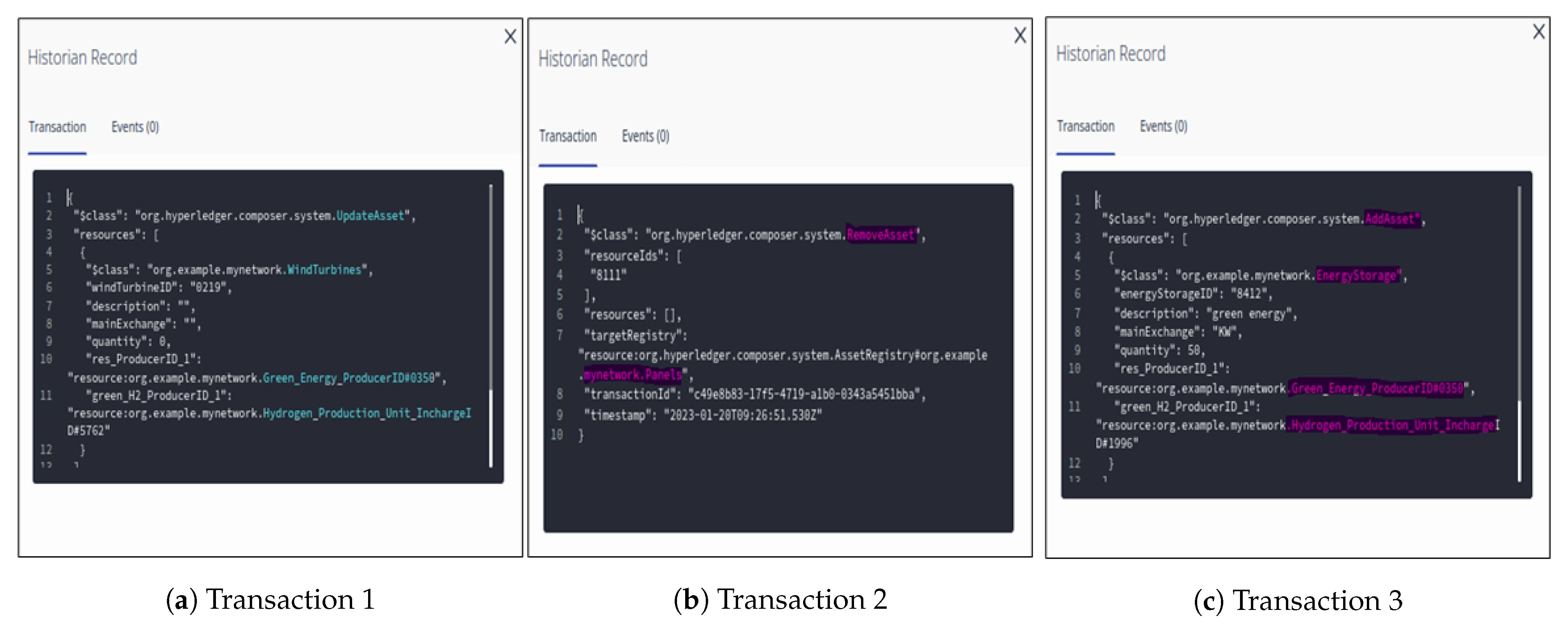
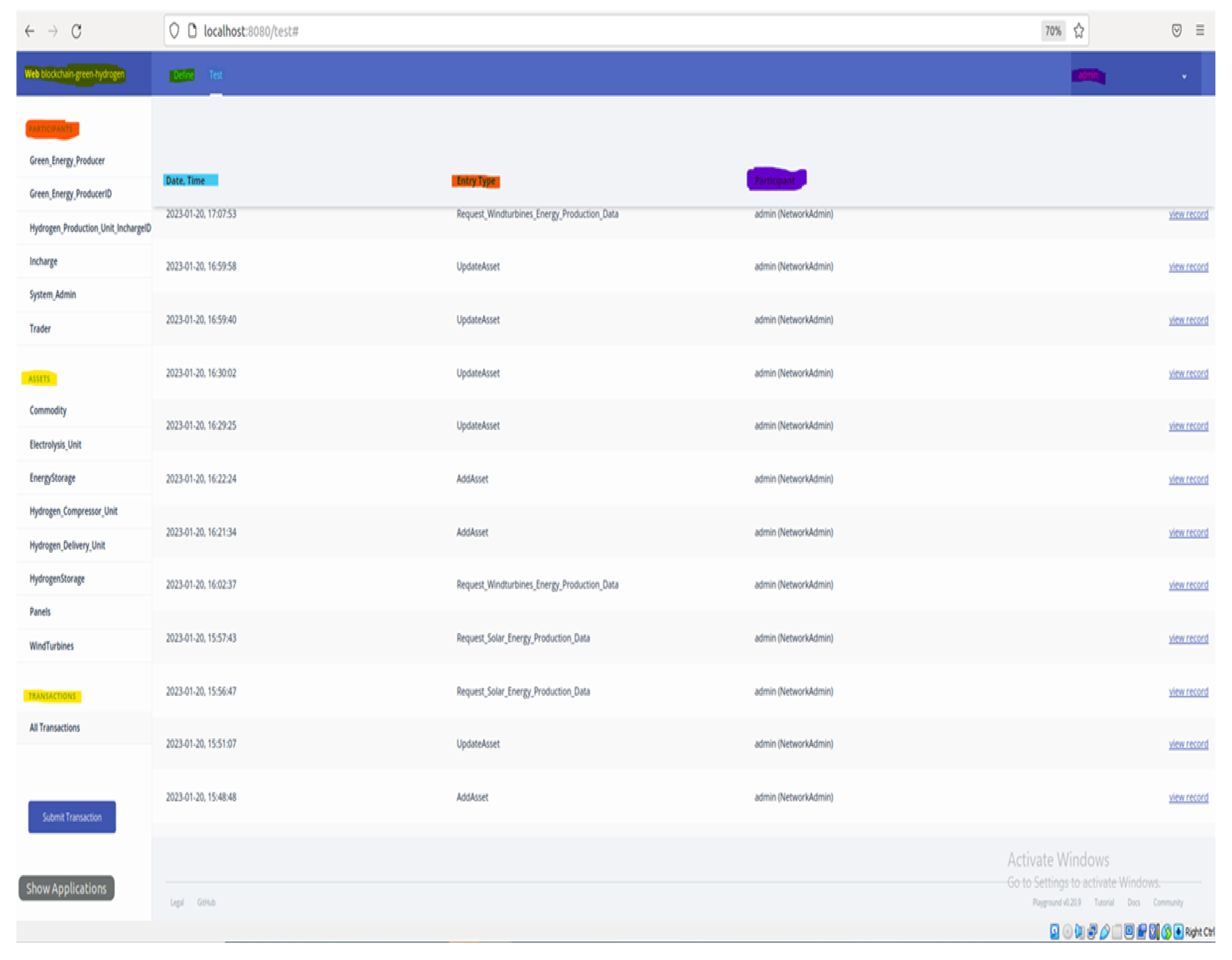
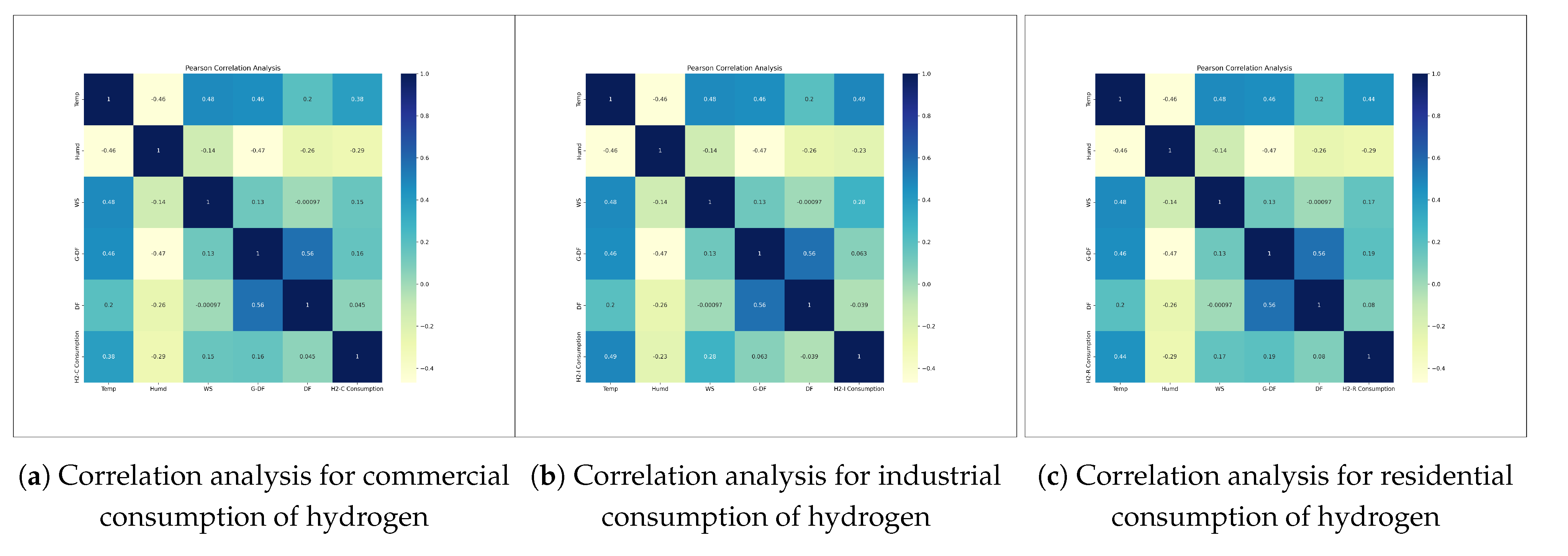

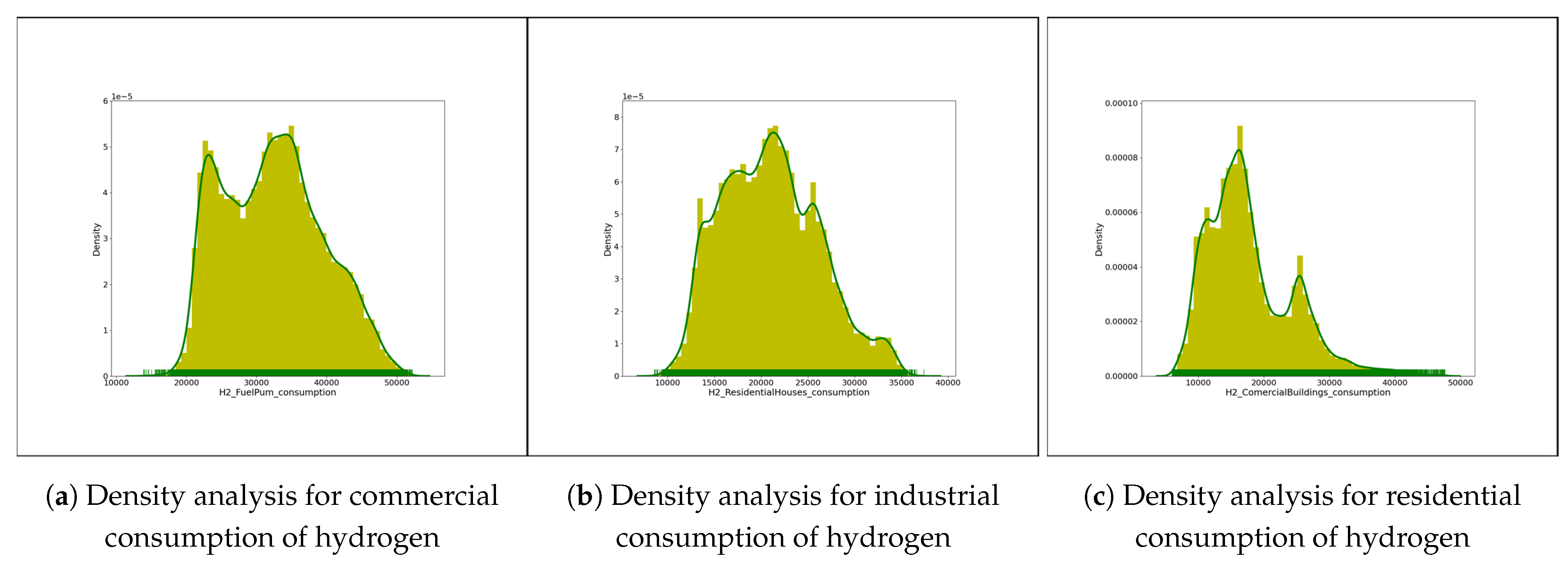

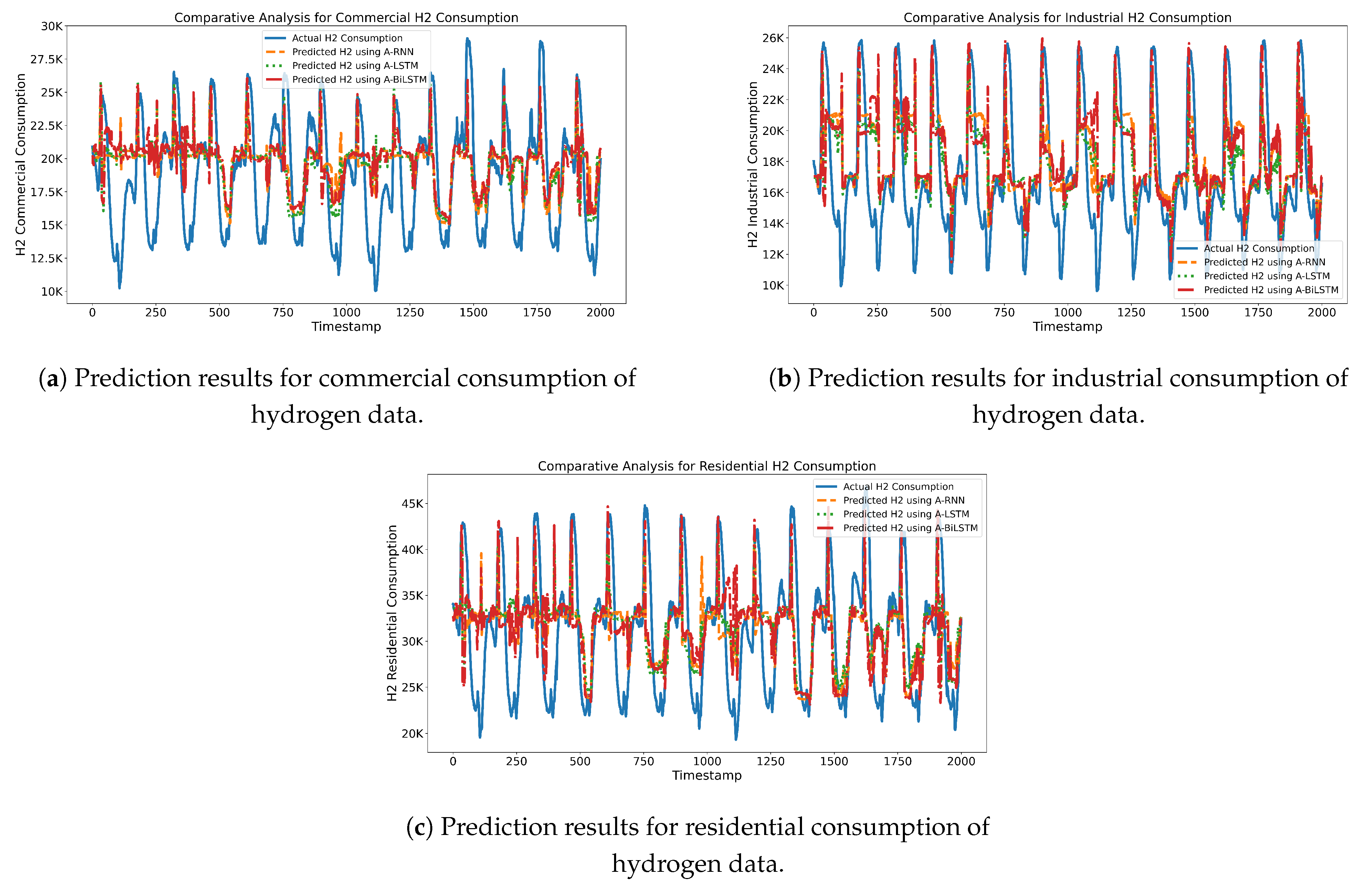

| Application Area | Ref. | Method Summary | Advantageous | Dis-Advantageous |
|---|---|---|---|---|
| Bibliometric Analysis | [31] | Emerging trends in the field of blockchain and machine learning are analyzed for the development of new blockchain-based machine learning platforms and data analysis frameworks. It enables federated learning that allows multiple parties to train a shared model and create decentralized marketplaces for bibliometric analysis. | In the method, blockchain provides a decentralized and immutable ledger, which helps to improve the security and privacy of data with better transparency and traceability. ML-based methods can be used to develop new automation tools and processes. | Blockchain and machine learning are both complex technologies; combining them can be challenging, slow, and expensive to scale. |
| Health Care | [32,33,34] | A private blockchain network is built based on Hyperledger Fabric for health care to support the sharing and management of patient records between different health-care providers. | The method improves the security and privacy of patient records by providing a decentralized and tamper-proof ledger. Automated many manual processes in the health-care system, such as patient registration and record sharing. | The lack of standardization of blockchain technology. Blockchain implementations must adhere to the health-care regulations where achieving compliance can be complex and time-consuming |
| Supply Chain Management | [35,36] | The authors use a structural equation modeling approach to analyze data from a survey of 300 retail supply chain employees in India to adopt blockchain technology. | The authors perceived the benefits of blockchain technology, such as improved transparency, traceability, and efficiency, are positively associated with employees’ intentions to adopt blockchain. | The perceived risks of blockchain technology, such as complexity and cost, are negatively associated with employees’ intentions to adopt blockchain. |
| Construction Industry | [37,38] | The authors investigate the barriers and mitigation strategies to blockchain technology implementation in the construction industry. The authors use an interpretive structural modeling (ISM) approach to analyze data from a survey of 10 construction experts. | A systematic and rigorous method for identifying the root causes of problems and to develop effective mitigation strategies in the construction industry to communicate complex information in a clear and concise manner for blockchain-based data analysis. | ISM can be time consuming and complex to implement as it requires a high degree of expertise from the researcher. It can be subjective, and the results may vary depending on the researcher’s interpretation of the data. |
| Social Network Analysis | [39,40] | A social network analysis (SNA) framework for modeling and handling cross-blockchain ecosystems. A multi-dimensional and multi-view SNA framework is designed for modeling cross-blockchain ecosystems. The framework considers different dimensions of the ecosystem, such as the network’s topology, the flow of transactions, and the behavior of wallets and users. | SNA is a powerful tool for analyzing complex networks, such as cross-blockchain ecosystems that allow it to capture the different aspects (multi-dimensional and multi-view) of cross-blockchain ecosystems. It can be used to identify important wallets in cross-blockchain ecosystems and to develop strategies for handling common challenges. | SNA is complex and computationally expensive to implement. The framework proposed in the paper is still in its early stages of development, and more research is needed to evaluate its effectiveness in real-world cross-blockchain ecosystems. |
| Finance and Insurance Industry | [41,42] | The blockchain platform provides a secure and transparent ledger for storing and managing insurance data. Smart contracts automate many manual processes in insurance claims processing and underwriting. | Decentralized applications offer a variety of services to insurance customers, such as policy comparison, claims processing, and risk assessment. Blockchain-based data analysis can help to reduce fraud in the insurance industry by providing a secure and tamper-proof ledger for storing and managing insurance data. | Several assumptions, such as the assumption that all parties involved in the insurance process are honest and trustworthy. The framework could be vulnerable to fraud and attacks if these assumptions are unmet. The framework is not yet widely adopted by the insurance industry. This could make it difficult to find other insurance companies and organizations that are willing to participate in the blockchain network. |
| Smart Automotive Diagnostic | [43,44] | The system is designed to improve the efficiency, transparency, and security of automotive diagnostics and performance analysis, where the OBD device collects data from the vehicle’s sensors and sends it to the blockchain network. The cloud platform provides a variety of services to users, such as data visualization, analytics, and reporting. | The system uses cryptography to protect vehicle data from unauthorized access and tampering. This can help to improve the security of vehicles and prevent fraud. Blockchain helped to automate many of the manual processes involved in automotive diagnostics and performance analysis. | Many challenges are associated with implementing and managing blockchain technology in the automotive industry. More research and testing are needed to evaluate the effectiveness of the system in real-world automotive applications. |
| Smart Livestock Farming | [45] | The blockchain network stores and manages livestock data in a secure manner in which IoT sensors are used to collect data from livestock, such as their health, location, and activity levels. Smart contracts are used to automate animal feeding and vaccination. | It has automated many of the manual processes involved in livestock farming and provided a secure and transparent way to store and manage livestock data. It can lead to increased efficiency, reduced costs, improved food safety traceability, and trust between consumers and farmers. | Blockchain networks are slow and expensive to scale, which could limit the applicability of the framework to large-scale livestock farms. |
| Tourism Industry | [46] | The study uses qualitative and quantitative data collection methods for a blockchain-based framework to enhance the integrated blue economy on smart islands. Qualitative data are gathered from scientific journal publications and analyzed using VOS viewer. Quantitative data are obtained through a questionnaire survey of 150 blue economy industry players in the Seribu Islands. | The authors identify several potential benefits of blockchain as well as the challenges of implementation. They also provide a case study of the Seribu Islands in Indonesia to illustrate the potential of blockchain in a real-world setting. | Findings are specific to the Seribu Islands and may not fully apply to other regions or contexts. Implementing blockchain technology can be complex, and the study does not delve deeply into the technical challenges and potential barriers faced during implementation. |
| Data Protection | [47] | Blockchain-based biomedical document protection (BBDP) uses cryptography to secure biomedical documents and protect their privacy. The algorithm allows authorized users to retrieve biomedical documents from the blockchain in a secure and privacy-preserving manner. | The blockchain-based framework is transparent and auditable. This means that all transactions are recorded on the blockchain and can be viewed by anyone. BBDPF offers a holistic approach to safeguarding biomedical documents, addressing data integrity, non-repudiation, and smart contract support. | The study focuses on specific blockchain technologies and may not fully generalize to all health-care contexts. Blockchain operations, especially on public blockchains, can consume substantial computational resources. |
| Type | Component | Description |
|---|---|---|
| Assets | Wind Turbines | Wind turbines are REAs that convert wind energy into electrical power. Wind turbines are essential for harnessing wind power and generating green energy. |
| Solar Panels | Solar panels are a key asset in the green hydrogen asset network, as they utilize solar energy to produce clean and sustainable electrical power. | |
| Green Energy Storage System | The green energy storage system is a crucial asset that stores excess renewable energy generated by wind turbines and solar panels. It helps balance energy supply and demand, ensuring a stable and reliable power output. | |
| Hydrogen Electrolyzer | The hydrogen electrolyzer is a critical asset used for the production of green hydrogen through the process of electrolysis. | |
| Hydrogen Storage | Hydrogen storage units are responsible for storing the produced green hydrogen securely. They ensure that the hydrogen is readily available for utilization during peak demand or when renewable energy generation is low. | |
| Hydrogen Delivery Units | Hydrogen delivery units are involved in transporting hydrogen to various destinations such as hydrogen housing, hydrogen turbines, and hydrogen fuel pumps. These units facilitate the distribution of hydrogen throughout the system. | |
| Participants | Operational in Charge | The operational in charge is responsible for overseeing and managing the day-to-day operations of the power management system. They have the authority to request adjustments to the power management system control and initiate transactions related to the system’s operation and performance. |
| Maintenance in Charge | The maintenance in charge is in charge of monitoring and maintaining the various assets in the green hydrogen asset network. They can request maintenance for the assets as needed and interact with the hydrogen storage smart contract to check the status and maintenance requirements of the hydrogen storage units. | |
| Data Analyst | The data analyst plays a vital role in the power management system as they are responsible for performing data analysis on the energy generation data obtained from wind turbines and solar panels. They use various data analysis techniques to extract insights and patterns that can aid in decision making and optimization of the power management system. | |
| Supply Management | The supply management participant is involved in tracking and managing the delivery of hydrogen to various destinations within the system, such as hydrogen housing, hydrogen turbines, and hydrogen fuel pumps. | |
| Transactions | Adjust Power Management System Control | The operational in charge initiates this transaction to request adjustments to the power management system control. This could involve optimizing the power distribution, adjusting energy storage settings, or managing renewable energy sources based on real-time data and system requirements. |
| Retrieve Energy Generation Data | The power management system smart contract interacts with wind turbines and solar panels to retrieve real-time energy generation data. These data are crucial for making decisions regarding power distribution and storage. | |
| Perform Data Analysis | The data analyst requests energy generation data from the power management system smart contract to perform data analysis. This transaction involves extracting insights, identifying patterns, and generating data analytics reports. | |
| Request Maintenance | The maintenance in charge initiates this transaction to request maintenance for specific assets in the green hydrogen asset network. The smart contract verifies the maintenance requirements and schedules necessary maintenance activities. | |
| Retrieve Hydrogen Delivery Data | The supply management participant requests hydrogen delivery data from the hydrogen data analysis smart contract. This transaction provides information on hydrogen delivery to various destinations within the system. | |
| Approve or Cancel Maintenance Request | After receiving the maintenance request, the smart contract allows the operational in charge or maintenance in charge to approve or cancel the maintenance request based on the system requirements and priorities. | |
| View Data Analytics Report | The operational in charge and data analyst can view the data analytics report generated by the data analyst through this transaction. The report includes insights on energy generation, power distribution, and system performance. | |
| Hydrogen Consumption Prediction | The power management system smart contract may include a transaction for hydrogen consumption prediction. This involves leveraging the hydrogen data prediction module to forecast hydrogen usage for various applications, such as hydrogen housing, turbines, or fuel pumps. |
| Component | Description |
|---|---|
| CPU | Intel Core i9-8500 @ 3.00 GHz |
| Memory | 20 GB |
| Operating System | Ubuntu Linux 18.04.1 LTS |
| Docker Engine | Version 18.06.1-ce |
| Docker-Compose, Simulink | Version 1.13.0, Version 10.7 |
| Node | v8.11.4 |
| Python, Matlab | v2.7.15, R2023a |
| Hyperledger Fabric | v1.2 |
| IDE | composer-playground |
| CLI Tool | composer-cli, composer-rest-server |
| DBMS | CouchDB |
| Programming Language | JavaScript |
| Component | Description |
|---|---|
| Operating System | Windows 10 Professional |
| Hardware | Anemometers, Temperature Sensors, IMU-6050, and Humidity sensors |
| CPU/Memory | Intel(R) Core(TM) i5-5800 CPU @ 3.00 GHz, 32 GB |
| External Libraries | geodesy-2.0.0, slf4j-api-1.7.2, achartengine-1.1.0, EJML-core-0.26, and MidasconSDK_android_1.0.0. |
| Programming Language | Java, Python (for pre-trained LSTM model) |
| Integrated Development Toolkit | PyCharm |
Disclaimer/Publisher’s Note: The statements, opinions and data contained in all publications are solely those of the individual author(s) and contributor(s) and not of MDPI and/or the editor(s). MDPI and/or the editor(s) disclaim responsibility for any injury to people or property resulting from any ideas, methods, instructions or products referred to in the content. |
© 2023 by the authors. Licensee MDPI, Basel, Switzerland. This article is an open access article distributed under the terms and conditions of the Creative Commons Attribution (CC BY) license (https://creativecommons.org/licenses/by/4.0/).
Share and Cite
Jamil, H.; Qayyum, F.; Iqbal, N.; Khan, M.A.; Naqvi, S.S.A.; Khan, S.; Kim, D.H. Secure Hydrogen Production Analysis and Prediction Based on Blockchain Service Framework for Intelligent Power Management System. Smart Cities 2023, 6, 3192-3224. https://doi.org/10.3390/smartcities6060142
Jamil H, Qayyum F, Iqbal N, Khan MA, Naqvi SSA, Khan S, Kim DH. Secure Hydrogen Production Analysis and Prediction Based on Blockchain Service Framework for Intelligent Power Management System. Smart Cities. 2023; 6(6):3192-3224. https://doi.org/10.3390/smartcities6060142
Chicago/Turabian StyleJamil, Harun, Faiza Qayyum, Naeem Iqbal, Murad Ali Khan, Syed Shehryar Ali Naqvi, Salabat Khan, and Do Hyeun Kim. 2023. "Secure Hydrogen Production Analysis and Prediction Based on Blockchain Service Framework for Intelligent Power Management System" Smart Cities 6, no. 6: 3192-3224. https://doi.org/10.3390/smartcities6060142
APA StyleJamil, H., Qayyum, F., Iqbal, N., Khan, M. A., Naqvi, S. S. A., Khan, S., & Kim, D. H. (2023). Secure Hydrogen Production Analysis and Prediction Based on Blockchain Service Framework for Intelligent Power Management System. Smart Cities, 6(6), 3192-3224. https://doi.org/10.3390/smartcities6060142







